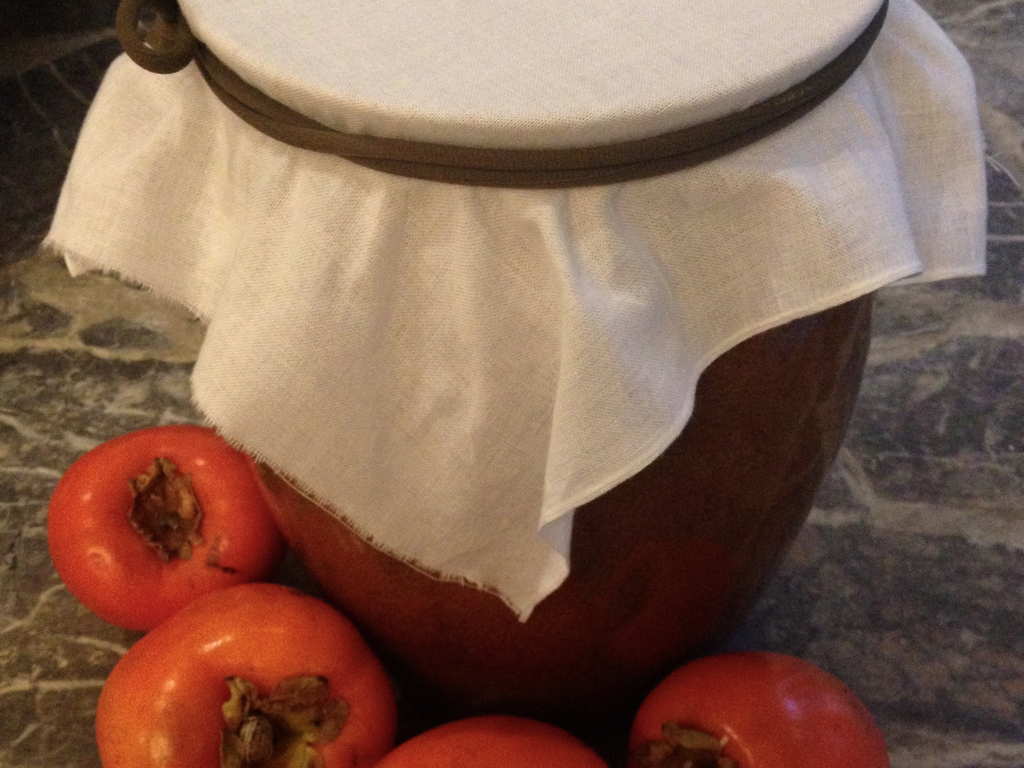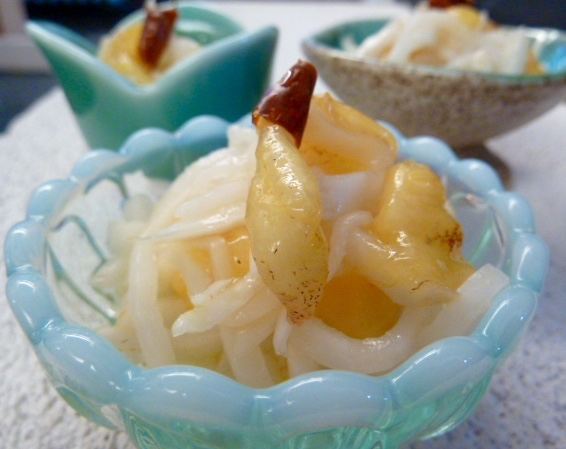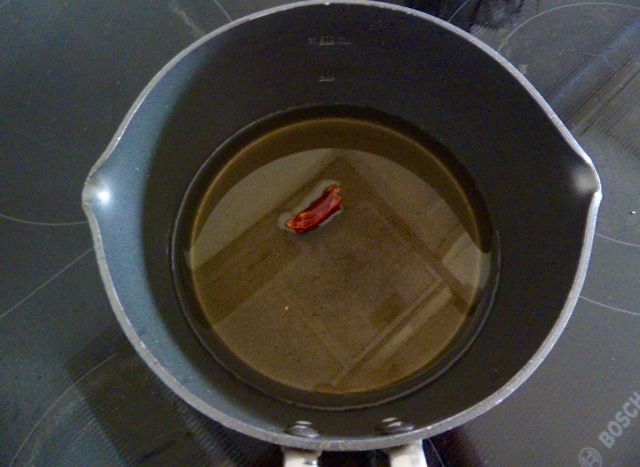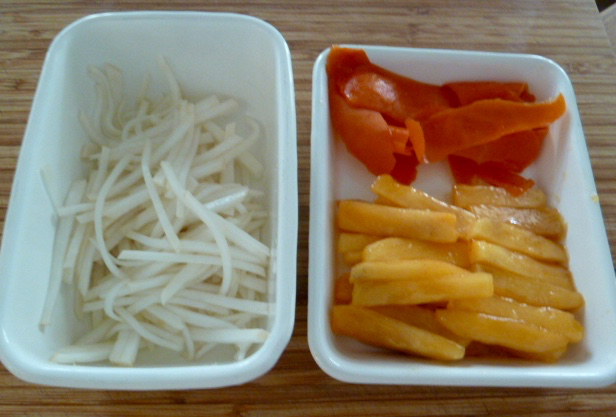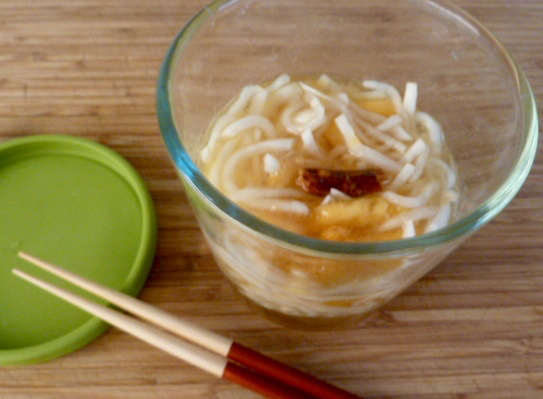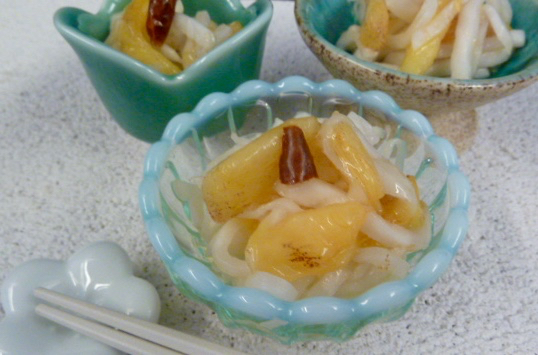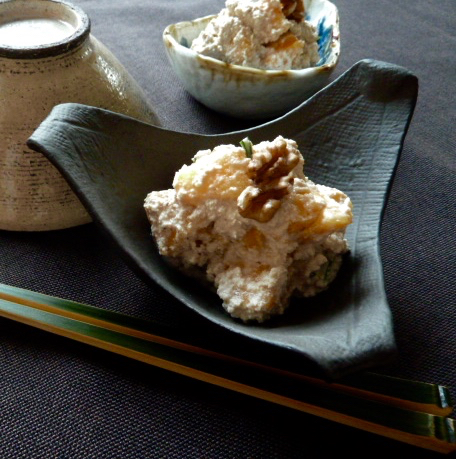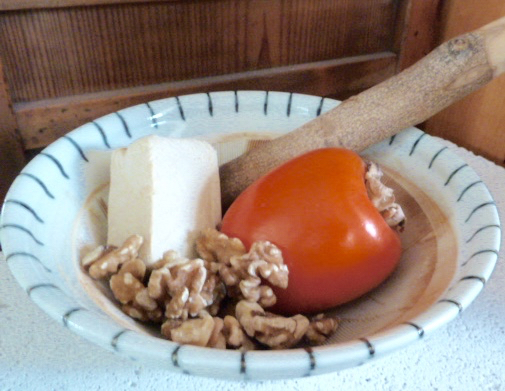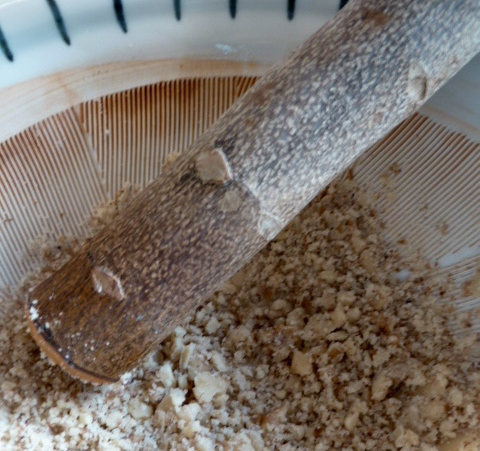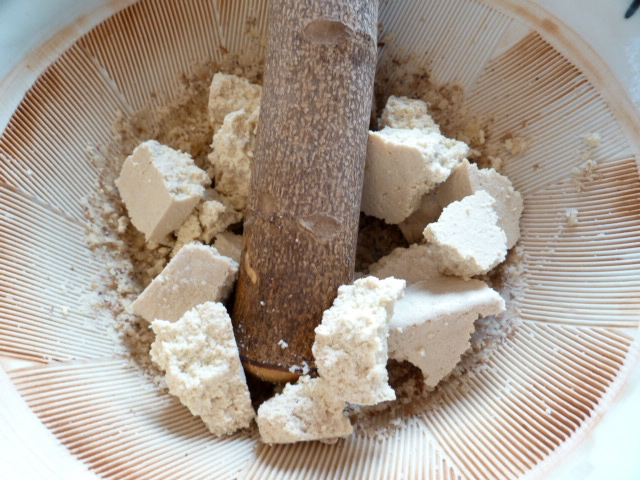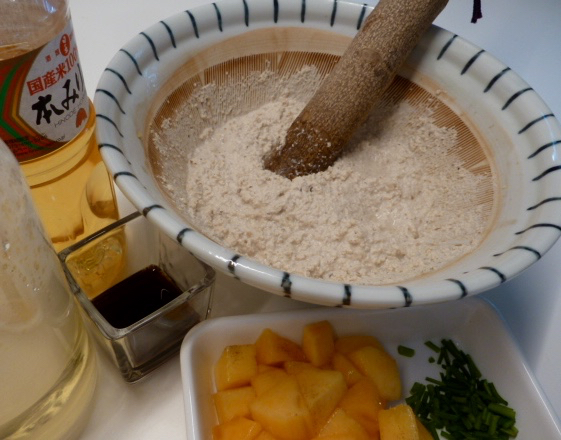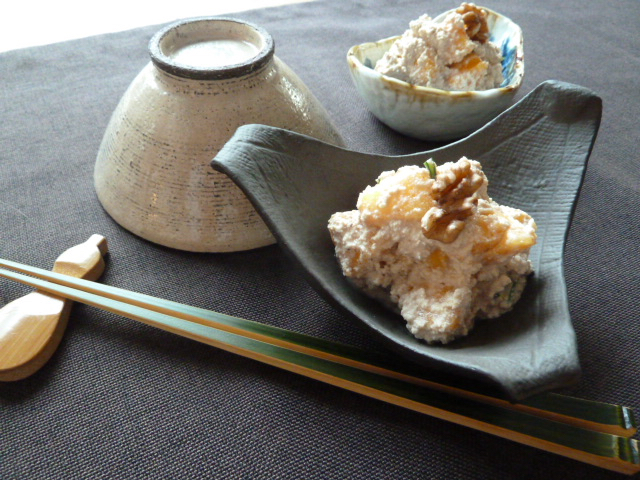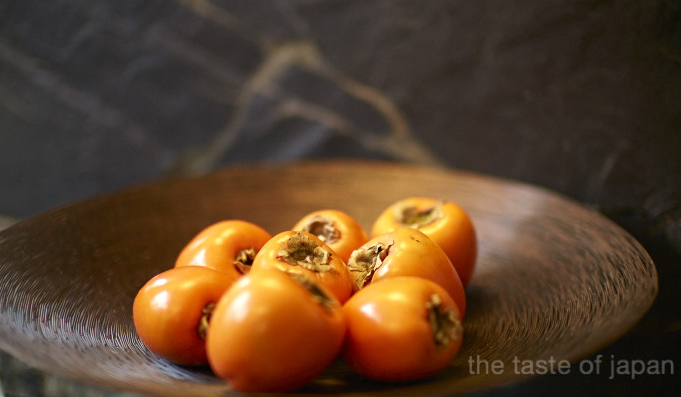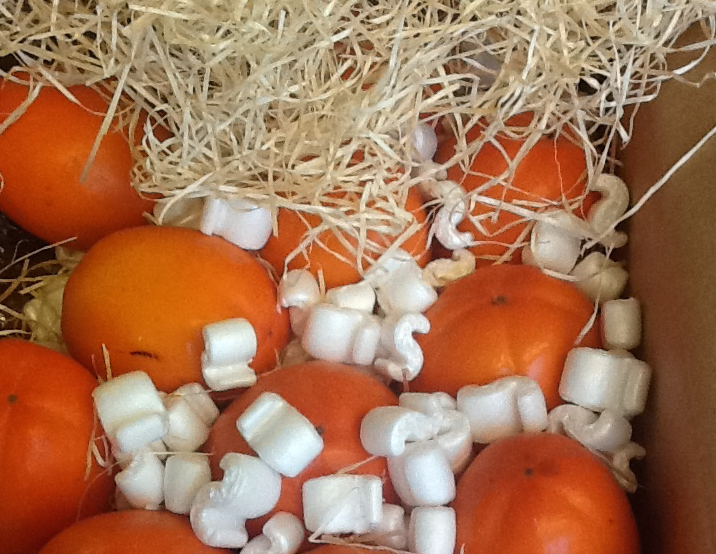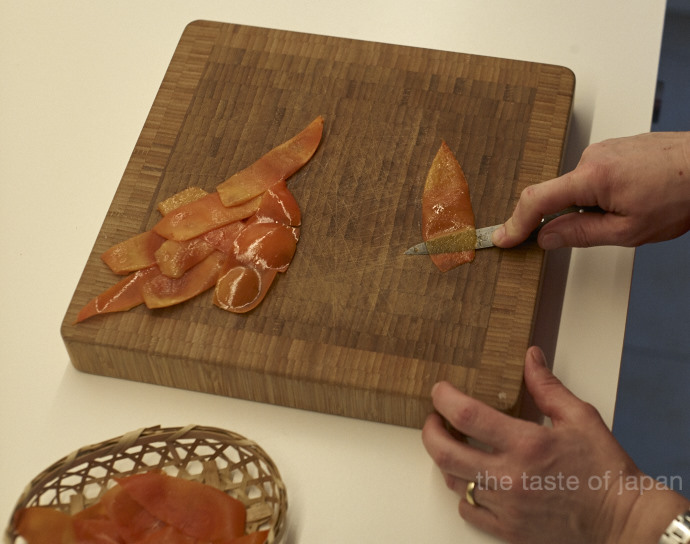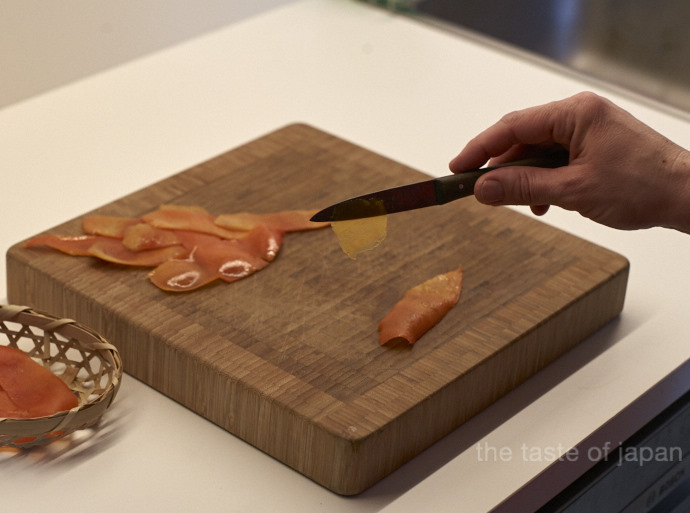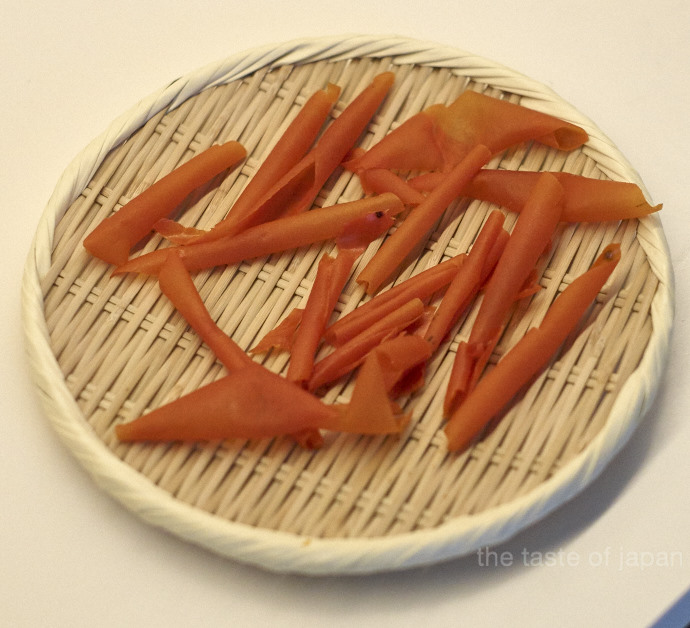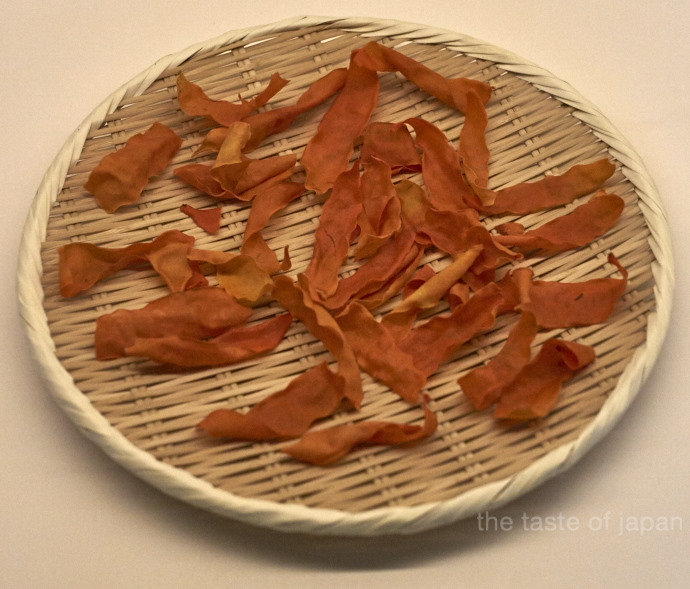I know that I promised pictures of my Hoshigaki (dried persimmons) and a description how to make this Japanese treat at home. I am continuously documenting the progression of the drying process, but have not yet managed to write up the corresponding article. Sorry for that, I have to put you off for a bit more until I am ready to post this piece.
More exercise is the no.1 New Year’s resolution of German women, with a healthy diet and loosing weight being second and third. Well, I am not going to help you with exercising, but at least I can contribute the other two. Even a pretty yummy contribution: Kakisu (persimmon vinegar).
In Korea persimmon vinegar is rumored to be the secret weapon to loose weight easily. Busy (working) women drink a few glasses persimmon vinegar dilluted in water per day and some of them swear that nothing ever worked as good and easy in loosing weight.
Having three kids, a normal household (as much as a household can ever be normal with there little ones being intensely busy counteracting any attempt of tiding up), a garden and a job, I have neither time to exercise not to eat a lot. I wouldn’t consider myself skinny, but loosing weight has not yet appeared on my priority list. Maybe when I have more time (wonderful excuse – this way I will get around it for a looong time).
In my house making Kakisu always had culinary reasons. A fruity, yummy vinegar that I like to add to fresh and light summer dishes. My current vinegar is happily fermenting its way and should be ready in spring, just about when all the magazines start to promote the ultimate bikini-workout for the upcoming beach season. As I have it sitting around, why not test the loosing weight effect of Kakisu? I will keep you updated how it goes (without pictures :-).
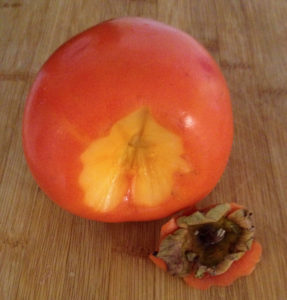
Kakisu is embarrassingly simple to make. If you want to join me in my loosing-weight experiment or if you are curious about making persimmon-vinegar yourself, start your pot, before the season is over.
Ingredients for one pot
- 4-6 kg unwashed persimmons (various kinds are as ok as various degree of ripeness)
- 1 big fermentation pot (non-reactive) without a lid
- 1 piece of clean cotton, big enough to cover the pot
- 1 string, long enough to wind around the pot twice
Method
Do not wash the persimmons. The yeast on the skins is what you nee to get the fermentation process going.
Remove the calyx and stuff as many persimmons as you can cut side down in your pot (I like to put the ripe or overripe ones on the bottom to get the liquid production going fast). Put a clean cloth on top of the pot and tie it down with the string. That’s basically it.
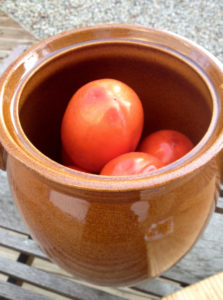
From now on you should mix and squish the persimmons every two days. The first one or two times it is more of a rearranging from top to bottom than mixing. The first two or three times I usually add more persimmons, as the increasing degree of persimmon mash creates room for more persimmons to be added to the mix.
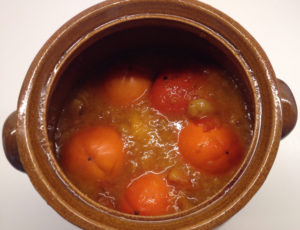
After about a week you should have a puree that is happily fermenting it way, forming a fruity and foamy persimmon-mash. Keep mixing every other day for another three to four weeks. Don’t forget to taste it once in a while. After about a month the persimmon-mash should start to get vinegary overtones. This is your sign to stop mixing. Let it rest to form a ‘mother’ on the surface, mature and mellow for the next three months.
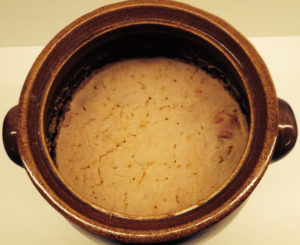
Don’t forget to taste it periodically. Once it has mellow fruity vinegar taste it is time to strain it through a piece of sarashi (Japanese fabric that today is often used in Japanese cooking), a double-layered cheese cloth or a similar cloth). Plan a couple of days for this process; because of the amount of mash, extracting the vinegar will take some time.
And of course there is another use for the persimmon-puree that is left behind in your cloth, so don’t throw it out! Store it in a lidded container in your fridge and use it to pickle daikon or turnips in it. You might also want to store a bit of it in a separate little jar as a condiment. It can be an alternative to ume boshi (Japanese pickled plums) puree. As such to a simple dish as or shio-zuke (salt pickles) as a fruity kick or spread it as a sauce on roulade and add a shiso leaf (Japanese leafy spice) before you roll it up and fry it.
